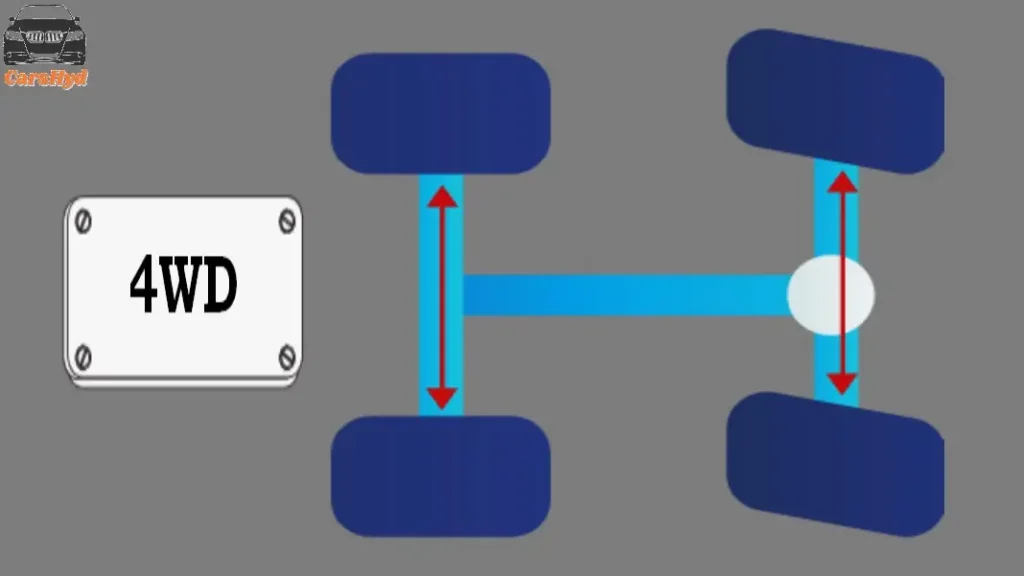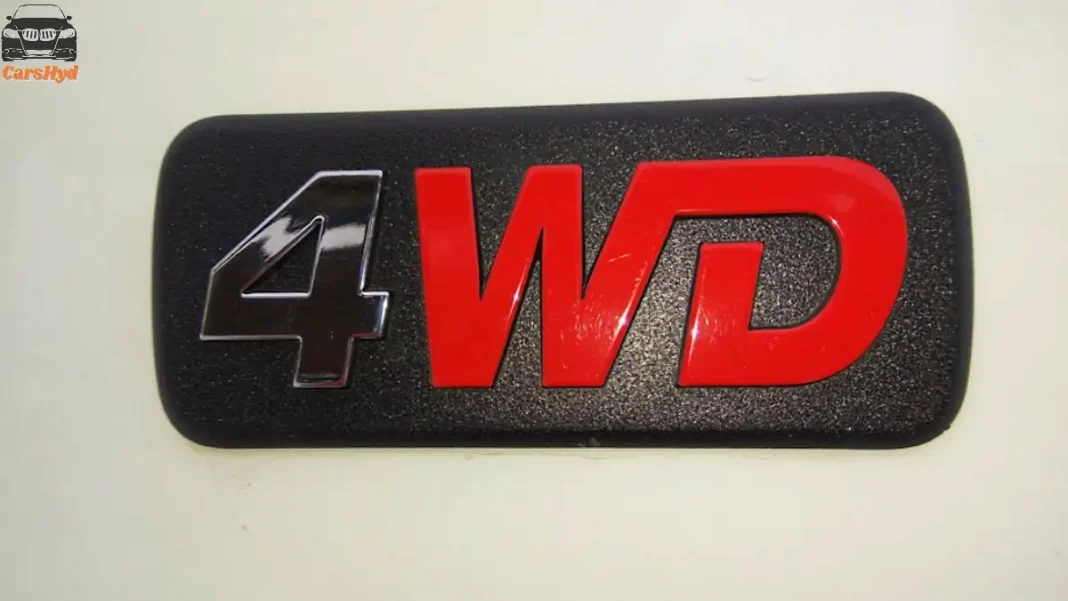When it comes to all-terrain vehicles, the term “SUV” (Sport Utility Vehicle) is often mentioned, and it’s frequently associated with four-wheel drive, or 4WD. However, not all SUVs are equipped with 4WD. So, what’s the real relationship between SUVs and four-wheel drive systems? To answer this question, it’s essential to delve into the definitions and distinctions between SUVs, 4WD, and AWD (all-wheel drive).
What is an SUV?
A sport utility vehicle (SUV) parked on a rocky ridge, showcasing its higher ground clearance and rugged exterior
An SUV is a type of vehicle that, at first glance, often resembles an off-road vehicle due to its robust appearance, high ground clearance, and typically hatchback shape. The original idea behind an SUV was to provide a vehicle suited for various driving conditions, including towing, transporting, and sometimes even off-roading. However, as SUVs have grown in popularity, the definition of this vehicle type has become much broader.
Today, the term SUV encompasses a wide range of vehicles, from urban crossover SUVs and electric hybrids to high-performance luxury SUVs. This diversity means that not all SUVs are necessarily equipped to handle rough terrains. Many modern SUVs come with partial or full AWD (all-wheel drive) or even just front-wheel drive, making them more suited for road driving rather than off-road adventures.
Understanding Four-Wheel Drive (4WD)
Four-wheel drive, or 4WD, is a drivetrain configuration that distributes engine power to all four wheels of a vehicle. This technology is specifically designed to enhance traction and stability on challenging terrains such as muddy paths, rocky trails, or slippery roads. There are two main types of 4WD systems: full-time 4WD and part-time 4WD.

Full-time 4WD, also known as permanent 4WD, operates continuously and cannot be turned off. This type of system is commonly found in traditional off-road vehicles like the Toyota Land Cruiser, Jeep Wrangler, or Mercedes-Benz G-Class. These vehicles are designed to offer maximum traction at all times, even under extreme conditions.
On the other hand, part-time 4WD can be manually activated or deactivated by the driver as needed. This provides greater flexibility, allowing the driver to use 4WD only when necessary, such as during slippery or rough conditions. This system is particularly useful for drivers who only occasionally encounter off-road conditions.
What is AWD (All-Wheel Drive)?

All-wheel drive (AWD) is often confused with 4WD, but there are significant differences between the two systems. AWD is a system that automatically and electronically distributes power to all wheels as needed, enhancing traction and stability in various driving conditions. Unlike 4WD, which is often designed for extreme off-road conditions, AWD is mainly intended to improve traction in everyday driving situations and can handle less severe conditions such as light snow or wet roads.
AWD systems come in two types: full-time and part-time. Full-time AWD operates continuously, distributing power between the front and rear wheels based on the driving conditions. This means that all wheels receive power at all times, which improves vehicle stability.
Part-time AWD, on the other hand, is activated automatically when conditions demand additional traction. For example, if the vehicle detects a loss of traction on slippery surfaces, the AWD system activates to improve wheel grip. Once conditions improve, the system can revert to a lighter traction mode.
Differences Between SUV, 4WD, and AWD

To address the initial question, it’s crucial to understand how SUVs, 4WD, and AWD compare and contrast.
| Type | Description | Usage |
|---|---|---|
| SUV | A vehicle with varied driving capabilities. Some SUVs come with 4WD, but many are designed for road driving with front-wheel drive (FWD) or partial AWD. | Primarily for road driving; varies in off-road capability. |
| 4WD (Four-Wheel Drive) | A drivetrain configuration that powers all four wheels simultaneously. Ideal for extreme off-road conditions. | Best for rugged, off-road terrains. |
| AWD (All-Wheel Drive) | A versatile system that enhances traction and stability in various conditions, but not as suited for extreme off-road use as 4WD. | Suited for daily driving and changing weather conditions. |
Why Don’t All SUVs Have 4WD?
It’s important to remember that not all SUVs are designed for off-road adventures. With the increasing popularity of SUVs in urban environments, many models are primarily designed for road driving. These SUVs may come with front-wheel drive or partial AWD, making them better suited for everyday driving needs.
Furthermore, not all drivers require the capabilities of a 4WD system. For those living in areas with mild weather conditions and who do not need off-road capabilities, AWD is often sufficient. AWD provides enhanced safety and stability without the added cost and complexity of a 4WD system.
We conclude the difference between SUV, 4WD and AWD
In summary, while the term “SUV” is often associated with four-wheel drive, not all SUVs come with 4WD. Four-wheel drive (4WD) is specific to vehicles designed for challenging terrains and is typically found in rugged, off-road capable SUVs. In contrast, all-wheel drive (AWD) is more common in modern SUVs, offering improved traction for everyday driving conditions.
Understanding the differences between these systems can help drivers make the best choice for their specific driving needs, whether it’s for off-road adventures or daily urban driving. Be sure to consider your actual driving conditions and check the vehicle specifications to ensure it meets your performance and safety expectations.
Frequently Asked Questions
1. Can an SUV with AWD handle off-road conditions as well as a 4WD SUV?
No, AWD is generally less suited for extreme off-road conditions than 4WD. For tough terrains, 4WD is usually better.
2. Are there any SUVs that offer both AWD and 4WD options?
Yes, some SUVs offer both AWD and 4WD options, allowing drivers to choose based on their needs. These models might offer a base version with AWD for everyday driving and an upgraded version with 4WD for more serious off-road capabilities.
3. How do I know if an SUV has AWD or 4WD?
Check the vehicle’s specifications, owner’s manual, or exterior badges.
4. Does having AWD or 4WD improve a vehicle’s fuel efficiency?
Both AWD and 4WD systems can impact fuel efficiency, generally leading to higher fuel consumption compared to two-wheel drive vehicles. AWD systems can slightly decrease fuel efficiency due to the additional weight and power distribution, while 4WD systems, particularly full-time 4WD, can result in more significant reductions in fuel economy due to their more complex mechanical components and constant power distribution to all wheels.
5. Can I switch from AWD to 2WD or vice versa while driving?
Most modern AWD systems automatically engage or disengage based on driving conditions and do not require driver intervention. However, if your vehicle has a part-time 4WD system, you may be able to switch between 2WD and 4WD manually. It’s important to consult your vehicle’s manual for specific instructions on how to operate and switch between different drive modes safely.





















